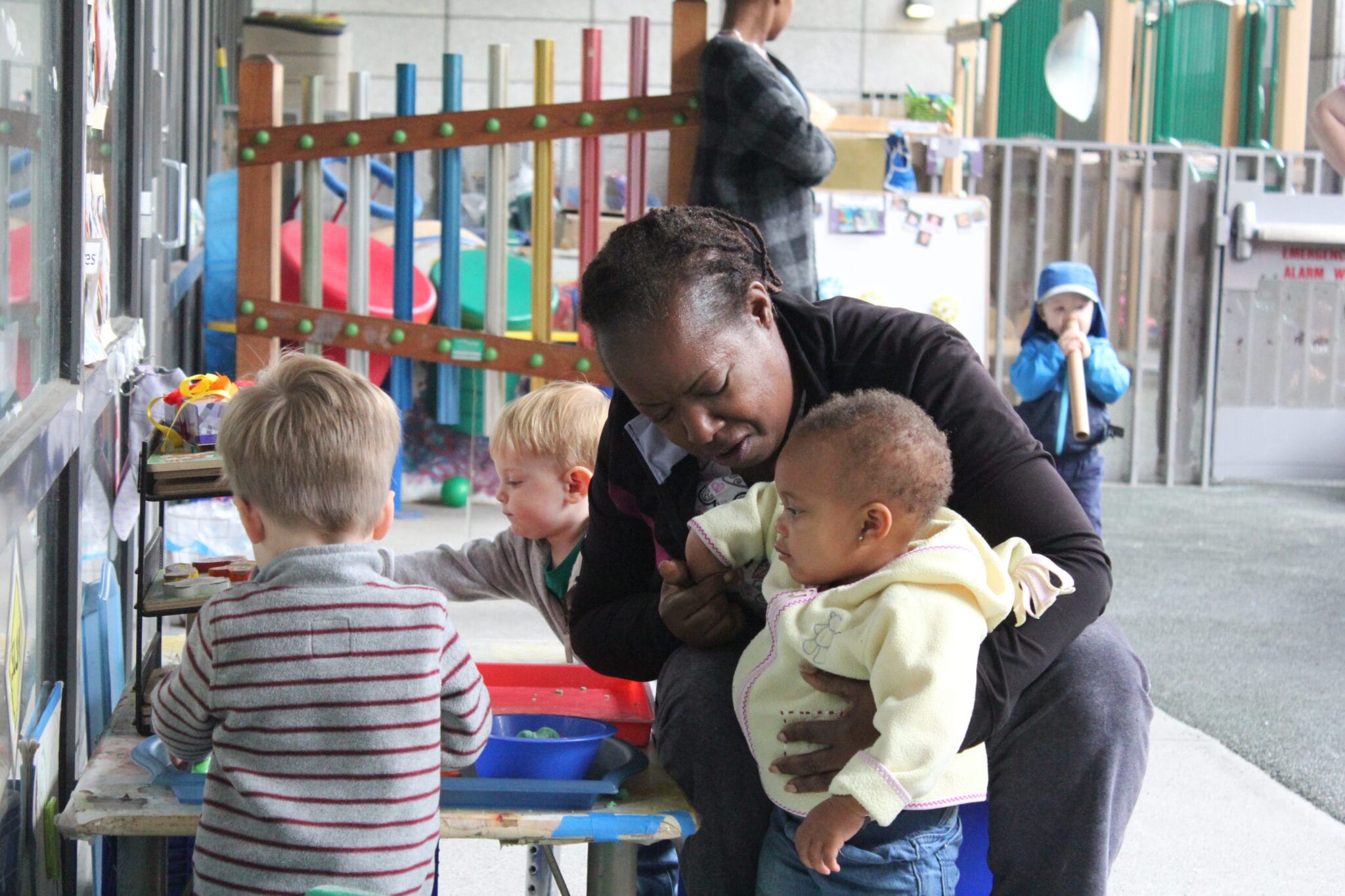Three weeks and counting since the World Health Organization declared the coronavirus COVID-19 a pandemic, confusion still reigns in the United States about whether or not to close child care programs and how to meet the child care needs of essential workers.
During the best of times, our nation incomprehensibly tolerates inequitable policies and a scarcity of resources for child care, even though it is an essential component of our educational and economic infrastructure. We allow the burden to fall most heavily on early educators and young children and their families, despite the body of child development and economic evidence that this approach is ill advised and short sighted.
At this terrible time, such folly is literally a matter of life and death, and the hardships are felt by all of us, not just the providers and users of child care. We need informed guidance based on epidemiology, children’s development, and the realities of group care, along with the necessary federal resources for targeted relief that will allow child care programs and their staff to financially survive this crisis.
We are risking community spread by allowing child care to remain open.
Children and their teachers in child care settings are no less contagious than those in schools or elsewhere. Yet, almost all K-12 schools across the nation are shuttered, as are parks, playgrounds, and other community recreation areas, while child care programs are allowed or even encouraged to remain open. Some states have even relaxed regulations to permit programs in centers and homes to serve even more children, while other states are directing child care programs to provide care to essential workers only and under stricter regulations. The Center for Disease Control (CDC) states that “the best way to prevent illness is to avoid being exposed to [the COVID-19] virus” and recommends all people practice social distancing. When it comes to protecting children, the CDC specifically recommends that “children should not have in-person playdates with children from other households” and declares: “If children meet in groups, it can put everyone at risk [emphasis from the CDC]. Children with COVID-19 may only have mild symptoms, but they can still pass this virus onto others….” While children statistically have the least risk of severe illness from COVID-19, babies and young children don’t do social distancing, and they can be carriers without exhibiting any symptoms. For this very reason, families are keeping their children away from grandparents, other older relatives, and those with higher risk, or they are carefully monitoring contact if they live in an intergenerational household.
As the nation hears from workers (including doctors, nurses, and warehouse, transportation, food service, and grocery workers) about the scarcity of personal protective equipment (PPE) and why not having PPE poses a life-threatening risk, we have come to understand that the combination of increased exposure to the virus and a lack of safety protection is proving deadly. So why is child care expected and even encouraged to remain open under the current conditions? Such expectations are not only reckless, but based on faulty assumptions about the children themselves and those who care for them.
CDC recommendations for group care are not grounded in the daily realities of child care and provide a false sense of security.
The latest CDC supplemental guidance for child care programs offers mixed messages about whether programs should remain open and fails to take into account the realities of young children’s behavior and the conditions of group care. The sheer breadth of recommended routines requires a level of staffing and space—placing children six feet apart at naptime for example!—that programs typically do not have and that actually run counter to how children and their teachers interact in group settings. The guidelines represent expectations that are unrealistic for many child care programs given how children behave, how programs are staffed and organized, and the nature of the COVID-19 pandemic.
For example, to prevent the spread of COVID-19, the CDC recommends covering coughs and sneezes, which is easy for adults to do and for school-age children to learn, but it is a nearly impossible expectation for preschool-age children, toddlers, and certainly babies. The CDC also recommends programs plan ahead to ensure they have supplies for sanitizing items, implement personal care routines, and use face masks, eye protection, and a different set of gloves to perform temperature checks on each child upon arrival. Across communities, these PPE supplies are scarce, with even hospitals struggling to access them. Furthermore, children do not all arrive at once, so as teachers stop to perform these checks, other children may go unattended.
Other guidelines reflect a lack of understanding about how children and their providers interact and the level of staffing required to carry out these recommendations in a group setting. For example, the CDC indicates that a teacher who holds and comforts a crying child should change both the child’s clothes and their own shirt afterwards due to exposure to secretions. This recommendation assumes teachers comfort one child at a time and infrequently. The CDC also recommends that food preparation not be done by the same staff who diaper children, yet prior to the pandemic 60 percent of center-based teachers worked in programs with fewer than 10 staff members, and home-based programs are often run by only one person.
The CDC guidelines make a series of recommendations for child care programs to plan for absenteeism and use substitutes. In most communities, there are no substitute pools for child care workers, and the additional suggestion to coordinate with other programs to find available teachers flies in the face of other guidelines to limit exposure to different groups and people.
Care in a child’s home is likely a safer way to address the critical child care needs of essential workers in health care and other industries, especially as the spread peaks.
To date, only Rhode Island has suspended all group care, recommending one healthy caregiver consistently provide services in a family’s home. Two-thirds of states have not ordered child care programs to close, while about 15 states have ordered closures of programs but allow emergency group care, with requirements and definitions varying across states.
One-on-one child care does have logistical, staffing, and safety considerations that face any workers providing service in a private home; resolving these issues will require innovation as well as child care expertise. The unique needs of children who are homeless or facing other risks also require special attention. However, many centers and homes offering services now will likely be shut as transmission increases, and states relying on group care will face another crisis.
With cases multiplying at an alarming rate, each day without a prudent child care policy and ongoing guidance as conditions change poses further threat to our besieged communities. Appropriate and effective recommendations should be crafted by an interdisciplinary team of experts in epidemiology, child behavior, and the current reality of child care provision.
Whether they are providing emergency care or sidelined by the pandemic, child care educators need greater protection, higher remuneration, and more respect.
We must stop relying on this workforce to assume ever greater responsibility without sufficient preparation, support, or reward. Early childhood teachers, program directors, and home-based providers already face greater physical ailments than the population as a whole. Many of these child care professionals are terrified of getting COVID-19 and dying; they are terrified of the risk to their own families and those in their care and terrified of losing their livelihoods. They have every right to be frightened. We put them at risk by failing to give them realistic guidance and resources to safely offer emergency care, including hazard pay and health coverage, and by failing to ensure that their salaries and benefits will be maintained if their programs are closed.
The latest CDC guidance for programs that remain open is irresponsibly silent about whether programs should close if there are too few staff members or insufficient supplies to implement their recommendations. These are not decisions for individuals to be making on their own.
Congress has made a small down payment on the financial aspect of the child care problem, but it’s time to do much more and do it quickly.



